Bipolar Junction Transistor · Analog Circuits · GATE ECE
Marks 1
A simplified small-signal equivalent circuit of a BJT-based amplifier is given below. The small-signal voltage gain $V_o / V_s$ (in $\mathrm{V} / \mathrm{V}$ ) is_________.




The value of R2 (in $$\Omega $$ ) for which I2 = 100 $$\mu {\rm A}$$ is ________.
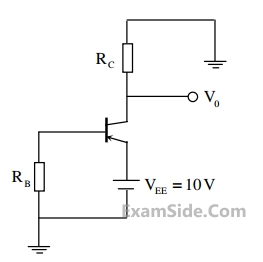
A1: Av0 = 10,Rin = 10 kΩ ,R0 =1 kΩ
A2 : Av0 = 5,Rin = 5 kΩ , R0 = 200 Ω
The approximate overall voltage gain $$\frac{{\mathrm V}_\mathrm{out}}{{\mathrm V}_\mathrm{in}}$$ is ______.



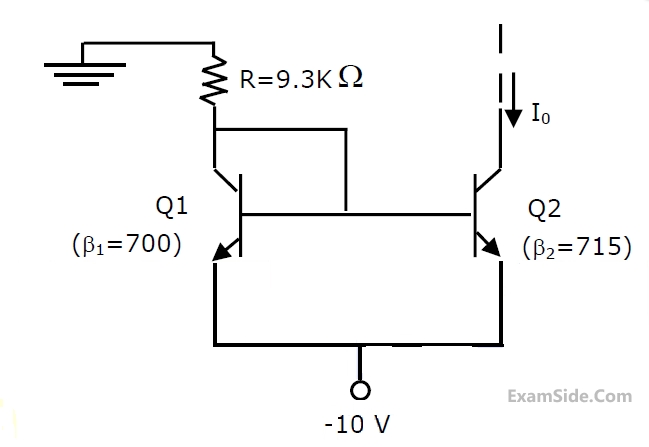
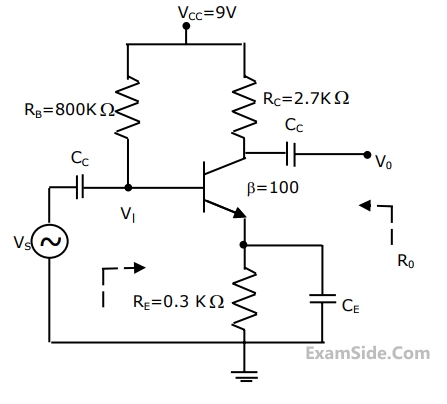


A transistor having $$\alpha$$ = 0.99 and VBE = 0.7 V, is used in the circuit of the figure.What is the value of the collector current?


Marks 2

Which of the following statements is/are true for a BJT with respect to its DC current gain $\beta$?

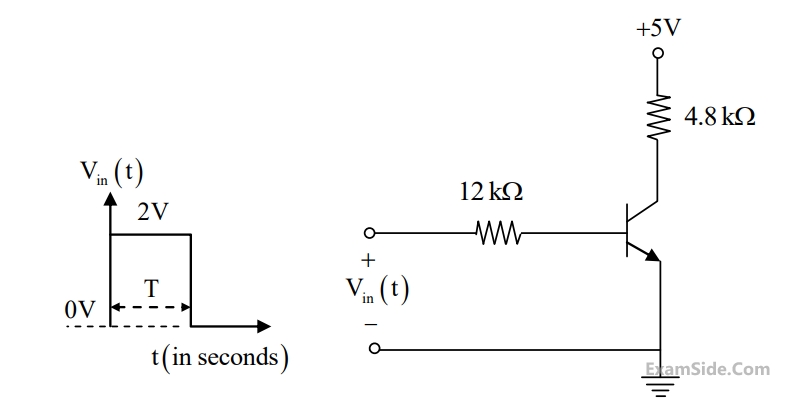
For the input vin(t)as shown in the figure, the transistor switches between the cut-off and saturation regions of operation, when T is large. Assume collector-to-emitter voltage saturation VCE(sat) = 0.2V and base-to-emitter voltage VBE = 0.7V. The minimum value of the common-base current gain$$\left( \alpha \right)$$ of the transistor for the switching should be _________.
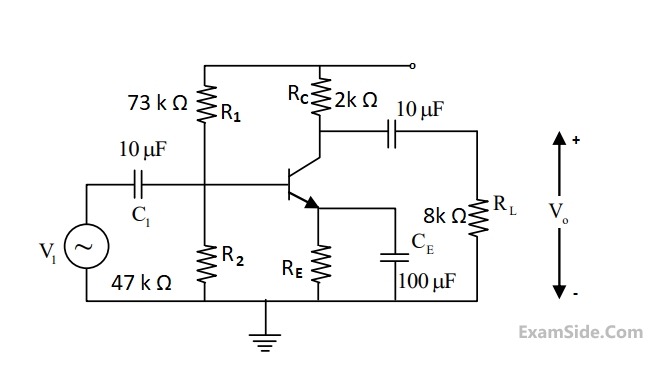









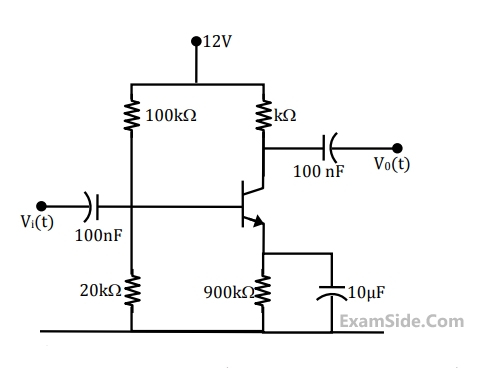

The mid-band voltage gain of the amplifier is approximately

The Value of DC current IE is


Under the DC conditions, the collector-to emitter voltage drop is

The small-signal gain of the amplifier $${{{V_c}} \over {{V_s}}}$$ is

If $${\beta _{DC}}$$ is increased by 10%, the collector-to emitter voltage drop


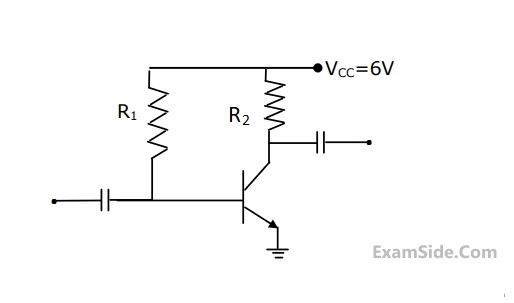
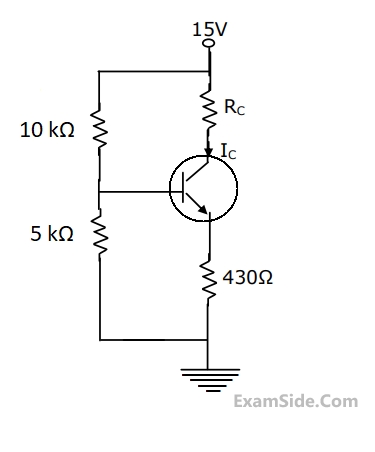
$$g\matrix{ c \cr m \cr } \left[ { \buildrel \Delta \over = {{{i_c}^c} \over {{v_{be}}^c}}} \right]$$ is given by

Group - I
(a)Cascode amplifier(b)Differential Amplifier
(c)Darlington pair common-collector Amplifier
Group - II
(1)does not provide current gain(2)is a wide band Amplifier
(3)has very low input impedance Emitter Amplifier and very high current gain
(4)has very high input impedance and very high current gain
(5)Provides high common mode voltage Rejection



The output impedance is



Marks 5

(a)Draw the small signal equivalent circuit of the amplifier.
(b)Obtain an expression for zi.
(c)Obtain an expression for z0.
$${I_C}\, = \,1.3\,mA,\,{R_C}\, = \,2\,k\Omega ,\,{R_E}\, = \,500\,\Omega ,$$
$${V_T}\, = \,26\,mV,\,\beta \, = \,100,\,{V_{CC}}\, = \,15V,$$
$${V_s}\, = \,0.01\,\sin \left( {\omega t} \right)\,V\,and\,{C_b}\, = \,{C_C}\, = \,10\,\mu F.$$
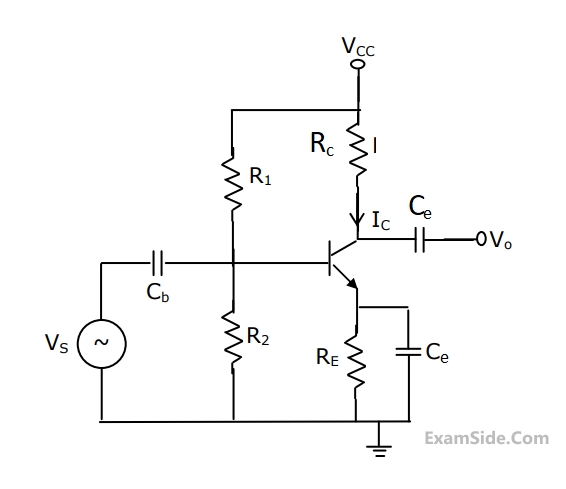
(a)What is the small-signal voltage gain, $${A_V} = {V_0}/{V_s}?$$
(b)What is the approximate $${A_{v,}}\,\,if\,\,{C_e}\,\,$$ is removed?
(c)What will $${V_0}\,be\,if\,{C_b}$$ is short circuited?
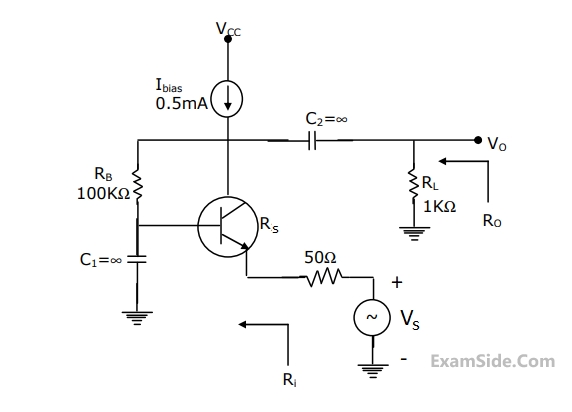
Determine the ac small-signal mid-band and voltage gain $$\left( {{V_o}/{V_s}} \right),$$ input resistance (R1, and output resistance (R0) of the circuit. Assume $${V_{T\,\,}} = \,\,26\,mV.$$
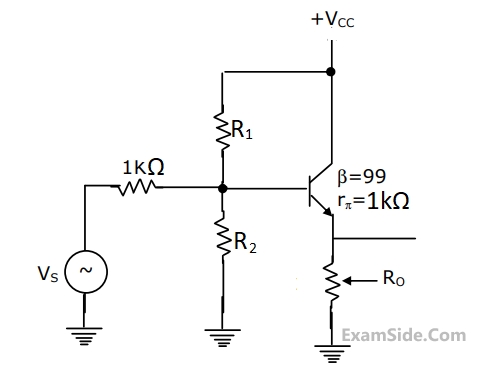
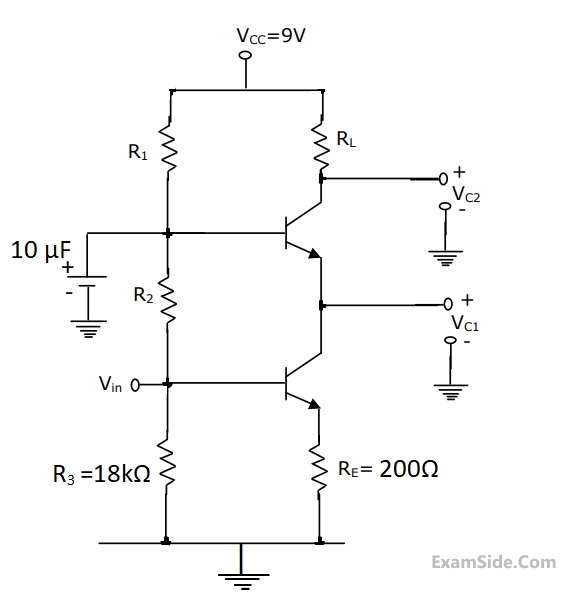

The N/W components have following values, RC = 2$$k\Omega $$,
RS = $$1.4k\Omega $$,
RE = $$100\Omega $$.
The transistor has specifications, $$\beta \,\, = \,\,100$$
and base spreading resistance $${r_{bb\,}}^1\, = \,100\Omega $$
Evaluate input resistance Ri for two cases. At a frequency of 10 kHz
(a)CE, the bypass capacitor across RE is 25 $$\mu F$$
(b)The bypass capacitor CE is removed leaving RE unbypassed.